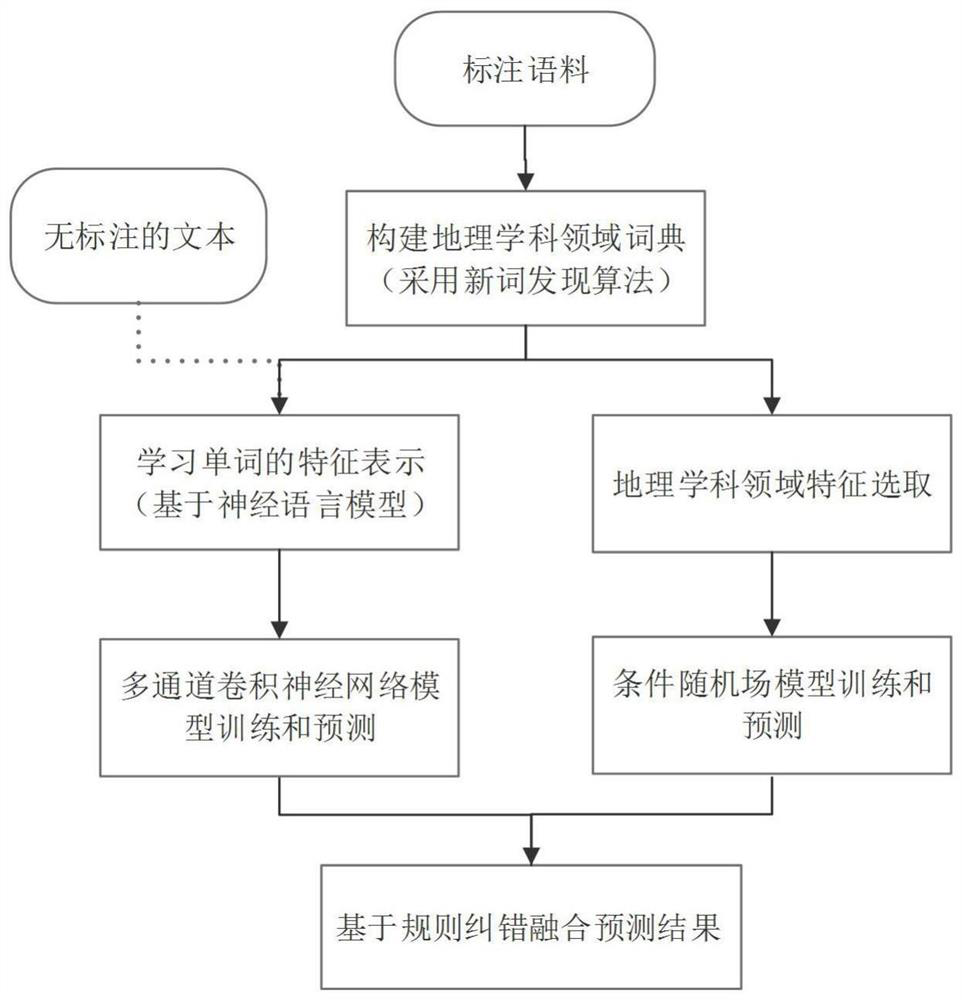A Method for Recognition of Named Entities in the Field of Geography
A named entity recognition and discipline technology, applied in the field of information extraction, can solve the problems of word segmentation in the field, lack of large-scale manual labeling training corpus, etc.
- Summary
- Abstract
- Description
- Claims
- Application Information
AI Technical Summary
Problems solved by technology
Method used
Image
Examples
Embodiment Construction
[0035] The present invention will be further explained below in conjunction with the accompanying drawings and specific embodiments.
[0036] A method for named entity recognition in the field of geographic disciplines based on rule-based fusion of CRF and MCCNN models, such as figure 1 As shown, the method includes three steps: building a domain dictionary based on the new word discovery algorithm, training and predicting based on the CRF and MCCNN models, and merging the prediction results of the CRF and MCCNN models based on rules.
[0037] The problem can be described as follows: use U to represent the Chinese Wikipedia corpus, and use G to unmark the corpus G in the field of geography. The task of named entity recognition in the field of geography is based on the CRF model and the MCCNN model. Recognition is carried out, and finally the prediction results of the two models are fused based on the rules to correct the wrong marks in the recognition process. In the followin...
PUM
 Login to View More
Login to View More Abstract
Description
Claims
Application Information
 Login to View More
Login to View More - R&D
- Intellectual Property
- Life Sciences
- Materials
- Tech Scout
- Unparalleled Data Quality
- Higher Quality Content
- 60% Fewer Hallucinations
Browse by: Latest US Patents, China's latest patents, Technical Efficacy Thesaurus, Application Domain, Technology Topic, Popular Technical Reports.
© 2025 PatSnap. All rights reserved.Legal|Privacy policy|Modern Slavery Act Transparency Statement|Sitemap|About US| Contact US: help@patsnap.com



